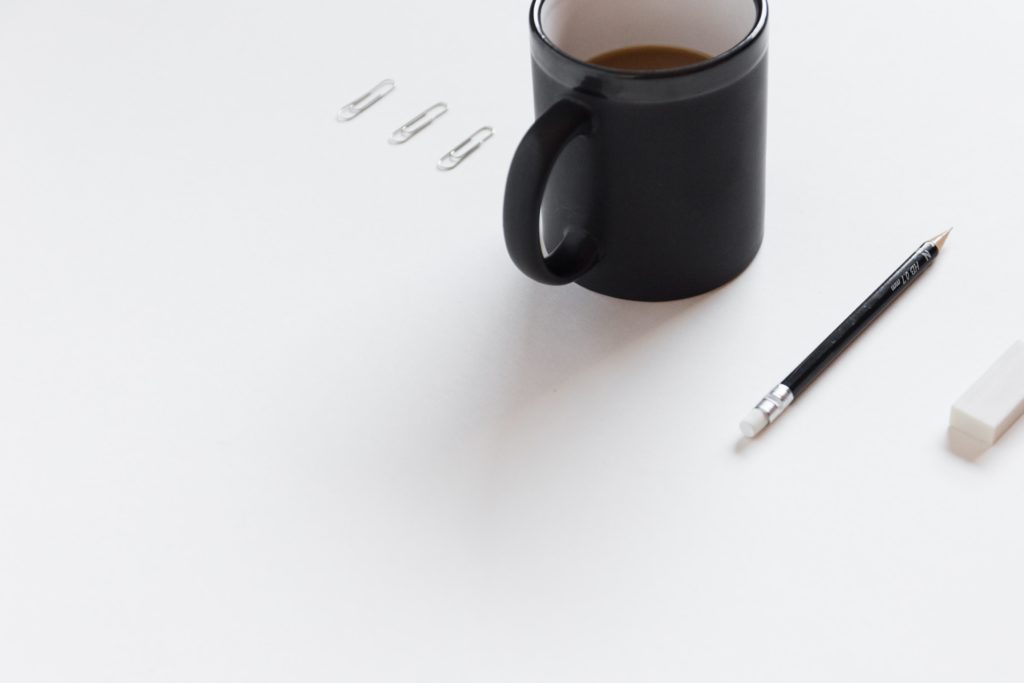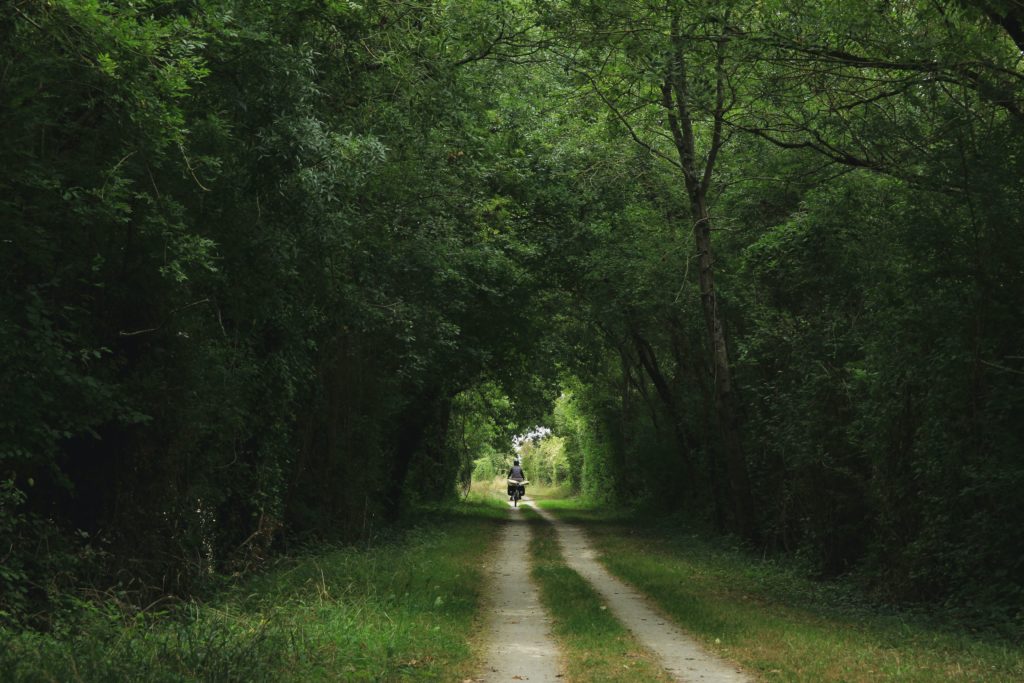We’re all obsessed with seeking joy. Don’t deny it. The proof is the gobs of money spent on gratitude journals, mood-boosting pills and elixirs, dopamine-seeking habits, and literally anything to make us feel good.
But while those choices may make you feel good in the moment, they aren’t actually helping you build a positive relationship with joy. So, if like most humans, you are yearning for a bit more joy in your life, the first and most powerful step you can take may sound counterintuitive: simplify your life.
The Ways We Seek Joy, Destroy It
While New York City is a delight, with its decadent restaurants, vibrant cultural menu, and cacophony of entertainment, I experienced my most joyful moments without ever donning my pink, suede Jimmy Choo’s and hitting the town.
Instead, I experienced them during a couple of months when I was able to tuck my entire life neatly into a duffle bag as I cycled 4,500 miles from Baltimore, Maryland to San Diego, California.
While I didn’t have access to the things we tend to seek out to bring us joy, I had a simple routine, oodles of time outside, and the pleasure of moving my body constantly. I was living in “full screen” mode and eating simply. I was unconcerned about my appearance and rarely looked at my phone. I may have missed out on the latest Instagram trends, but I didn’t miss out on the jokes I shared with my fellow cyclists, the delight of eating a sloppy and juicy orange, or the bliss of the warm sun kissing my arms and nose.
I felt free.
What I learned on that trip is that part of the reason that we have trouble finding joy is actually because of the very things we do try to find it. We suffer because we collect so many things, and, therefore, have so many opportunities to worry about those things., to be responsible for things – All that worrying steals our time and energy, leaving us less opportunity to work on ourselves, to gain wisdom, to train our mind, and to do good – the very things that actually bring us sustainable joy.
And while you may not be so bold as to give up all of your worldly possessions to experience a bit more “feel good” – the good news is that you don’t need to.

You don’t need to “give it all up,” you just need to strive for simplicity. And there are a few elementary steps you can take today that will bring a bit more simplicity into your life – and a lot more real joy.
Design Your Day Intentionally
The first thing you can do may sound obvious, but most people don’t do it: live your life intentionally. And that happens one day at a time.
Two of the best ways to start this process are by taking our Routine Reset mini-course, or downloading and completing the Obituary Test. These free tools can help your day and your life!
When you go through either of these, you’ll find that the first step to curating your desired lifestyle is understanding what you are currently doing, discerning your purpose, identifying that which is unnerving to that purpose, and culling out the superfluous.
The Routine Reset then asks you, “What do I need to do MORE of to design my ideal day and life?” It asks you to contemplate what would make your day and life more joyful? More delightful? More full of wonder?
These joy-bringers might include expanding your movement practice, spending more time with friends or family, eating more mindfully, or spending time on projects that will help you fulfill your financial, emotional, and spiritual needs.
If you’re so bold, I encourage you to go through this process and create your list of, “what would make my life more joyful.” Then, post it somewhere meaningful to you, where you’ll see it a lot. Resist the urge to compare your list to others via social media or just amid your colleagues. We all have different visions, purposes, and things that bring us joy. But designing each day intentionally is the first critical step to finding the simplicity that leads to joy.
Cull, Cull, Cull
When I’m feeling overwhelmed, stressed out, or just grumpy, one of the most powerful things I can do is cull, clean, and eliminate.
That may translate into cleaning a physical space, scrubbing the floors, or organizing my work area. Other times, it might mean cleaning out my email or looking through finances and deciding what is unnecessary.
While I don’t intend to clean out my closet and living in 3 outfits as I once did, I do find that when I have less physical and digital clutter, my brain feels less cluttered and makes room for me to make more powerful decisions.
Fullscreen Or Log Off
You multitask in an effort to do more. So do I. Even though I know it doesn’t work.
You know it doesn’t work, right?
I do everything in my power to reduce my multitasking since it doesn’t actually increase my productivity. Still, sometimes it just happens.
Something that helps tremendously (aside from working on your routine as we mentioned above) is to think of your entire life and all your choices as being in “full screen.”
That means only having one metaphorical (or literal) tab open at a time. There are plenty of apps that can help you reduce switch-tasking, like Onetab, Rescue Time, or Checky. But what’s most powerful is establishing an internal culture and to choose to find pleasure in one thing at a time.
Get Mindful About Nourishment
We all have a relationship with food. And for most of the world, that relationship could use a little TLC.
We use food to ease our emotional pain, to bring us joy, and to make us numb. However, food is best served as nourishment. When we re-establish our relationship with food and turn it a bit healthier, we can find so much joy in the simple act of preparing and consuming a meal.
Your nourishment doesn’t need to be complicated. If you’re feeling lost, I highly encourage you to work with an expert like a Licensed Dietitian Nutritionist, Certified Nutrition Specialist, or Registered Dietitian – just not that influencer you found on IG who’s been going keto for 15 years. While your nutritional advisor may tell you to consume certain foods, in certain ways, don’t forget that simple, diverse foods like plants, organ meats, good fats, and, in general, a colorful palate is the best way to nourishment.
MOVE – Don’t Exercise
Just like food, many of us have a skewed relationship with movement. It was once used as punishment in prisons. But here’s the thing, we’re now so much more sophisticated and can recognize that we don’t need to exercise in order to burn off calories, to eat a particular food, or to accommodate the calories-in calories-out toxic mantra.

Move your body in ways that feel joyous. Go out for a walk or dance in your kitchen. Get down on the floor with your dog or kids. Stretch in ways that feel good, lift heavy things and feel your strength, kick a ball around, jump over things, swim.
Moving more, and without the preconceived notions will not just give you those normal exercise-induced happy hormones and chemicals, but it will rekindle the simple joy you find from being a moving being.
Slow Down & Enjoy Quietude
One of the most powerful things about spending hours on a bicycle was that the volume was turned down in every possible way.
It was quiet in that there was less stimulation. It was quiet in that I didn’t have my phone buzzing and pinging at all hours of the day. And it was quiet in that I was just living slower and simpler.
And in that experience, I learned that I found joy by simply slowing down and doing a bit less. I learned to drink in life a bit more deeply, to observe the in-between spaces, and revel in the times that I didn’t know exactly what was coming next.
Those in-between spaces are the most powerful and hold the most potential. They grant us space and room to choose if we are to feel the next exciting, stimulating thing or slow down enough to experience true joy.
– – –
It might sound simple and unglamorous, but in general turning down the volume in our lives will not just reduce your stimulation levels and in turn your stress levels – reducing the noise in your life will create space and opportunity for real, sustainable joy to thrive and bloom in your life.
Sources
Schmitt, K. C. & Reith, M. E. A. (2011). The Atypical Stimulant and Nootropic Modafinil Interacts with the Dopamine Transporter in a Different Manner than Classical Cocaine-Like Inhibitors. PLOS ONE. https://journals.plos.org/plosone/article?id=10.1371/journal.pone.0025790
Wise, R. A. & Jordan, C. J. (2021). Dopamine, behavior, and addiction. National Library of Medicine National Center for Biotechnology Information. https://pubmed.ncbi.nlm.nih.gov/34852810/
Araujo, L. (2020). The Highway to Happiness. The MAPS Institute. https://themapsinstitute.com/the-highway-to-happiness/
Araujo, L. (2020). 17 Ways to Distraction-Proof Your Phone. The MAPS Institute. https://themapsinstitute.com/17-ways-to-distraction-proof-your-phone/
The MAPS Institute. The 7-Day Mindful Eating Challenge. https://themapsinstitute.com/the-7-day-mindful-eating-challenge-thank-you/
The MAPS Institute. Reset Your Routine and Get on the Path to Your Purpose-Driven Focus. https://themapsinstitute.com/the-routine-reset/
The MAPS Institute. Want a Step-by-Step Guide to Taking the Obituary Test? https://themapsinstitute.com/?post_type=tcb_symbol&p=1153
Puff, R. (2015). Three Steps Towards Simplifying Our Lives. Psychology Today. https://www.psychologytoday.com/us/blog/meditation-modern-life/201501/three-steps-towards-simplifying-our-lives
Araujo, L. (2021). How to Overcome Procrastination, Get More Done, and Retrain Your Brain Using the Pomodoro Technique. The MAPS Institute. https://themapsinstitute.com/how-to-overcome-procrastination-get-more-done-and-retrain-your-brain-using-the-pomodoro-technique/
Gardner, J. M. (2020). Personal productivity and the two-career household: The AIR method. US National Library of Medicine National Institutes of Health. https://www.ncbi.nlm.nih.gov/pmc/articles/PMC6997848/
Araujo, L. (2021). Why These Two Types of Overstimulation May Be The Reason You Can’t Focus. The MAPS Institute. https://themapsinstitute.com/why-these-two-types-of-overstimulation-may-be-the-reason-you-cant-focus/
Lascau, L; Gould, S. J J; Cox, A. L.; Karmannaya, E; Brumby, D. P. (2019). Monotasking or multitasking. The MAPS Institute. http://pure-oai.bham.ac.uk/ws/files/57094906/Monotasking.pdf
OneTab. https://www.one-tab.com/
RescueTime. https://www.rescuetime.com/
Checky. https://apps.apple.com/us/app/checky-phone-habit-tracker/id912482478
Rasky, B. (2021). Beyond the Diet: How Mindful Eating Can Finally Transform Your Relationship with Food. The MAPS Institute. https://themapsinstitute.com/beyond-the-diet-how-mindful-eating-can-finally-transform-your-relationship-with-food/
Zellner, E. How Stress is Keeping You From Leveling Up in Life. The MAPS Institute. https://themapsinstitute.com/course/erica-zellner-ms-cns-ldn-how-stress-is-keeping-you-from-leveling-up-in-life/
Painter, S. (2021). A Nutritionist Explains That The Way to Good Health is by Ditching Diet Culture – and Implementing These 4 Practices. The MAPS Institute. https://themapsinstitute.com/a-nutritionist-explains-that-the-way-to-good-health-is-by-ditching-diet-culture-and-implementing-these-4-practices/
Babb, M. (2021). Mindful Food Gathering: Infusing Joy into Grocery Shopping. The MAPS Institute. https://themapsinstitute.com/mindful-food-gathering-infusing-joy-into-grocery-shopping/
Eschner, K. (2017). In the 19th Century, You Wouldn’t Want to Be Put on the Treadmill. Smithsonian Magazine. https://www.smithsonianmag.com/smart-news/19th-century-you-wouldnt-want-be-put-treadmill-180964716/
Araujo, L. (2021). That Run or Yoga Class Isn’t Saving You From the Risks of Too Much Butt-in-Chair Time, But This NEAT Trick Will. The MAPS Institute. https://themapsinstitute.com/that-run-or-yoga-class-isnt-saving-you-from-the-risks-of-too-much-butt-in-chair-time-but-this-neat-trick-will/
Araujo, L. (2021). The Powerful, but Little-Known Relationship Between Fitness and BDNF. The MAPS Institute. https://themapsinstitute.com/the-powerful-but-little-known-relationship-between-fitness-and-bdnf/
Araujo, L. (2020). In Crisis, Is Silence Your Greatest Strength? The MAPS Institute. https://themapsinstitute.com/in-crisis-is-silence-your-greatest-strength/
